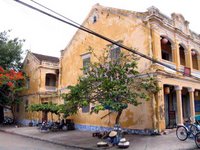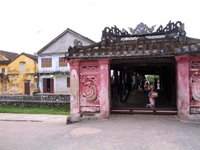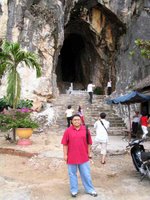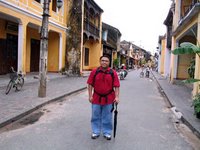
Day 1 in Ho Chi Minh City. I arrived at 9 a.m. after a two and a half-hour flight from Manila. Although I was at NAIA as early as four, the lack of sleep did not deter me from rushing out to explore this dynamic city.

First impressions do last. I was pleasantly surprised that a new and modern Tan Son Nhat airport welcomed me. How I wished that the Philippines opened its new terminal sooner since all other ASEAN countries have modernized their own gateways. Outside was an orderly line of taxis waiting for passengers. I was expecting to argue with the driver as one travel guide warned. But as soon as I sat down, he turned on the meter. I was booked in a hotel along Pham Ngu Lao Street, Saigon’s backpacker haven.

Most guides to HCMC always recommend a visit to its many pagodas and temples. I thus decided to drop by one or two to get the ball rolling. I took a cab to the Giac Lam Pagoda, believed to be the oldest in the city. It was quite a distance from the city center. And the trip made me a spectator to the organized chaos that passes through the many tree-lined motorcycle-choked boulevards of Saigon. There was not too much activity in the temple as what I’ve seen in other Buddhist temples in Southeast Asia. But there were a few devotees doing rounds around the different images with their joss sticks. By the time I exited its gates, it was time for lunch.
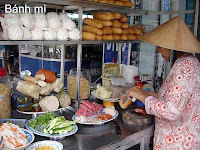
Since I was on the run, I tried to look for the neighborhood bahn mi vendor. These are the local sandwiches which may look Western but definitely taste Vietnamese. I just love the way the pate, meats, and herbs mix very well with the baguettes, a culinary blend of East and West indeed. After walking under the sun for several meters, I finally found a stand. Until now, I still cannot fathom how a sandwich that costs only VND5,000 (approximately 15 pesos) in the streets of Vietnam is sold for ten times that much in Manila!

After that quick bite, I visited nearby Giac Vien Pagoda. The first thing I noticed as I entered was a number of shrines on each side with photos of the departed. I walked around the hall for a while and was resting on a stool, preparing to leave, when the lone monk in the hall blurted out something in the vernacular, as if calling me to come closer. When I got to his table, he threw a few questions at me which he asked in English, albeit with a bit of difficulty. He stood up, picked up a few joss sticks, and asked me to follow him. He toured me around and I made my rounds around the temple like the locals.

It was another cab ride to my next stop, the Reunification Palace. The former presidential palace of the defunct South Vietnam, it was where the Vietnam War was said to end when tank number 843 rammed into its gates on April 30, 1975, the day Saigon surrendered. It has been left the way it looked on that momentous day for Vietnam. Even the command center in the basement of the building still has its war maps, telephone and radio equipment, and other items on display in the different rooms as if the war had just ended yesterday.

From the palace, I walked to the nearby Notre Dame Cathedral and General Post Office which stand beside each other. The red-brick neo-Romanesque cathedral, built between 1877 and 1883, towers over the area. Right beside it is the well-preserved post office building, one of the more elegant French colonial buildings of Saigon. There are in fact many more buildings like it.

Further down the road was Ben Thanh Market, the best place to start shopping in HCMC. I’ve gone shopping there before. But for this trip, I had no plans of spending on anything. So I decided to skip it since warnings and tales of bad experiences are very familiar to me. No matter how alert or good you are at protecting your things, sticky fingers around the place can get really sneaky. And I didn’t want to lose my camera or wallet while even just a few seconds caught off guard.
So I walked back to my hotel in Ð Pham Ngu Lao to get some rest before going out for dinner. The streets around Ben Thanh are also alive in the evenings. As soon as the shops inside close, those outside set-up tents for the night market. Right beside the market building, a row of stalls offers fresh seafood which they serve dampa style.

Right beside my hotel, was Allez Boo bar where I got to chill out, watching people and motorbikes go by this busy bamboo-walled street corner. I ordered the house special, Allezboo Slammer, a mix of amaretto, sambuca, brandy, lime juice and cointreau. Check out my photos in
Multiply.





































